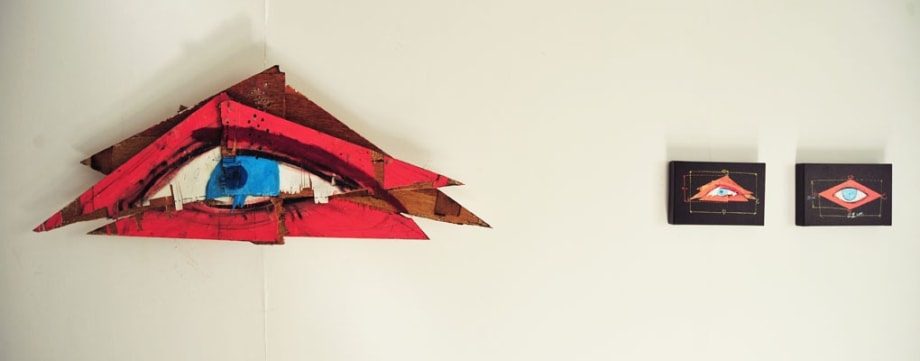Ayyam Gallery London is pleased to announce C.D.R - Construction, Destruction & Reconstruction, Saudi Arabian artist Faisal Samra’s first solo exhibition in the United Kingdom, from 13 February - 29 March 2014.
Faisal Samra has long been intrigued by the process of creation, ‘living with it each moment of the day, even during sleeping, therefore [he] wanted to treat this subject in [the] artwork itself’. Thoughts on the process of creation reached new dimensions as Samra began to consider not only construction, but also destruction and reconstruction in relation to the Middle East, the concept of the ego, and the human body.
The Sykes-Picot Agreement of 1916 changed the face of the Ottoman empire in the 20th century, demarcating new boundaries in the Arab world. The 2003 and subsequent invasions of Iraq heralded for the artist a period emblematic of destruction in the Middle East. With artworks referencing this destruction, Samra refers both to the unfair vision of the Arab world created by the West and how this vision requires reconstruction, and the West’s efforts at unseating previous power structures in the Middle East, de-installing them in order to set up a ‘New Middle East.’ To illustrate that what has happened in the quest to unsettle power is simply destruction, Samra renders the seat of power useless. Arabic script on the chair before the destruction states ‘Made in the Arab world’ and ‘Global Economical Power’, while after the reconstruction it states ‘Made in the Occidental world’ and ‘Global Economical Power’.
A clay idol deliberately fragmented into pieces is the starting point for a powerful four-part multimedia work that has been in progress since the Tunisian uprising of 2010. In this work, Samra borrows from Freudian psychoanalysis of the ego to explore the notion of wholeness in one unit, versus the effects of fragmentation in the very same unit. Bringing larger philosophical and political concepts to bear on the particular, Samra places together the fragmentary, the solid, and the digital, to demonstrate that the process of wholeness becomes inextricably linked to destruction.
A featured work of a more personal nature also explores the process of construction, destruction and reconstruction. A polyptych documents Samra’s wife undergoing chemotherapy after a diagnosis of breast cancer and shows the three stages of ‘Zeina’ before, during and after the treatment. The body is the primary example in which to witness the process of perpetual creation, destruction and regrowth. Just as our bodies are susceptible to threats, so too is the land where the artist lives and works.

